Models designed to explain how shapes are perceived and stored by the nervous system commonly emphasize encoding of contour features, especially orientation, curvature, and linear extent. A number of experiments from my laboratory provide evidence that contours deliver a multitude of location markers, and shapes can be identified when relatively few of the markers are displayed. The emphasis on filtering for orientation and other contour features has directed attention away from full and effective examination of how the location information is registered and used for summarizing shapes. Neural network (connectionist) models try to deal with location information by modifying linkage among neuronal populations through training trials. Connections that are initially diffuse and not useful in achieving recognition get eliminated or changed in strength, resulting in selective response to a given shape. But results from my laboratory, reviewed here, demonstrate that unknown shapes that are displayed only once can be identified using a matching task. These findings show that our visual system can immediately encode shape information with no requirement for training trials. This encoding might be accomplished by neuronal circuits in the retina.
1.
Introduction
1.1. Introduction to the problem
We study the hydrodynamic limit for a Fokker-Planck equation that arises in the modeling of a system of large particles immersed in a much larger number of micromolecules. Examples of such particle systems include dilute solutions of polymers that arise often in industrial settings [2,7,8,21,24]. Typically, macromolecules (or more precisely, the monomer parts they are comprised of) are modeled by ideal spheres whose interactions are mediated by interactions with the micromolecules. We model the micromolecules as an incompressible fluid governed by Stokes flow. The interactions of these idealized particles with the fluid are modeled by admissible boundary conditions, Brownian noise and the introduction of damping.
The dynamics of particle motion is described by a phase-space vector $(x,v)\in\mathbb{R}^{n}_{x}\times \mathbb{R}^{n}_{v}$. If the statistics of the particle motion is described by the probability density $f(t,x,v)\geq 0$, then the evolution of $f$ is governed by the Fokker-Planck equation
with the particle mass represented by $m$. The force $F(t,x,v)$ in our model is chosen so that $F(t,x,v)=-\nabla V(x)-G(x)v$, where $V(x)$ is a potential that depends on the particles' configuration and $G(x)v$ is the damping (hydrodynamic) force term. The potential $V(x)$ captures all interactions between beads that are not mediated by the fluid. This allows, particularly, for the incorporation in the model of any type of spring forces between beads.
The Fokker-Planck equation (1) is naturally associated to the phase-space stochastic differential system
where $W(t)$ is the centered Gaussian vector in $\mathbb{R}^{n}$ with covariance $\mathbb{E}( \dot{W}(t)\dot{W}(t')) =\mathrm{I}\delta(t-t')$. Here $\mathbb{E}$ stands for expectation with respect to Gaussian measure. The inclusion of the friction matrix $G(x)$ in the Brownian forcing term is an instance of the fluctuation-dissipation theorem which asserts that fluctuations caused by white noise and the response to small perturbations applied to the system are in balance. This is evident by the Einstein-Smoluchowski relation [10,32,35] that states that the diffusion tensor (related to thermal motion) is proportional to friction $G(x)$. The study of the limit $m \to 0$ in the stochastic system is the celebrated Smoluchowski-Kramers approximation (see e.g. [11]).
Equation (1) is very important in the description of polymer models when inertial effects are involved. This is reminiscent of the inertial kinetic models in the work by P. Degond and H. Liu [6]. Therein, the authors introduce novel kinetic models for Dumbell-like and rigid-rod polymers in the presence of inertial forces and show formally that when inertial effects vanish the limit is consistent with well accepted macroscopic models in polymer rheology. A direct quote from [6] reasons on the importance of kinetic models involving inertial effects in describing polymer sedimentation: ''In current kinetic theory models for polymers, the inertia of molecules is often neglected. However, neglect of inertia in some cases leads to incorrect predictions of the behavior of polymers. The forgoing considerations indicate that the inertial effects are of importance in practical applications, e.g., for short time characteristics of materials based on the relevant underlying phenomena''.
One of the differences with the theory in the Degond & Liu work is that we take into account hydrodynamic interactions between $N$ particles, with the use of the symmetric, non negative, $3N \times 3N$ friction tensor $G(x)$ that contains all the information for these interactions. These hydrodynamic interactions are the result of a particle's motion that perturbs the fluid and has an effect on other particles' movement. The constant friction case $G(x)=\gamma \mathrm{I}$ (for $\gamma >0$) is interesting in its own right as it corresponds to particles that ''sink freely'' without any hydrodynamic type of interaction between them. In this trivial case, there is no account of hydrodynamic effects and the parabolic limit is derived with no difficulty as we show. In a similar spirit as in [6], our goal is to show rigorously that equation (1) leads to the derivation of a well accepted Smoluchowski type of equation when inertial effects are ignored (see Theorem 1.1).
Before we proceed with the details of the limiting approximation, we should note the difficulties in computing the exact formula for friction $G(x)$ (or most commonly the mobility $\mu=G^{-1}(x)$) for every $N$ particle configuration. In practice, this would involve solving a linear Stokes system with very complicated boundary conditions, i.e., the $N$ particles' surface. A particular modelling problem is the appropriate way to compute these interactions for overlapping particles and particles that are almost touching. More specific, for particles that are very close, integrable singularities of the friction tensor are possible (lubrication effects). Below we give the two most important approximations of the mobility tensor used in simulations.
The first non-trivial approximation to mobility is the Oseen tensor that corresponds to Green's kernel solution of a Stokes problem for point particles [8,23]. For $N$ particles with centers $\{x_{i}\}_{i=1}^{N}$, radius $a$, in a fluid with viscosity $\eta$, the Oseen tensor $\mu^{OS}=[\mu^{OS}_{ij}]_{i,j=1}^{N}$ is a $3N \times 3N$ tensor with $3 \times 3$ blocks
where $R_{ij}=x_{i}-x_{j}$ and $\hat{R}_{ij}=R_{ij}/|R_{ij}|$. This approximation works quite well when particles are well separated ($|R_{ij}|\gg a$), but it is degenerate for particle configurations that involve particles relatively close. This implies that the Oseen tensor cannot be a meaningful choice that leads to a well-posed theory (in the sense of existence, uniqueness, macroscopic limit, …).
The Rotne-Prager-Yamakawa approximation of the mobility tensor [33,36] is a nonnegative correction to the Oseen tensor that applies to all particle configurations. In addition, Rotne and Prager [33] obtained a way to calculate mobilities for overlapping spheres. The expression for the RPY $3N \times 3N$ mobility has blocks
Eigenvalues of the tensor depend continuously on the particles' positions, they are bounded and the RPY mobility is locally integrable in space. On the other hand, the tensor is still not strictly positive. In more detail, when two spheres (of radius $a$) almost coincide and their centers have distance $d=|R_{ij}|\ll a$, then the minimum eigenvalues $\lambda_{min}(x_{1},x_{2})$ of RPY are of order $O(d)$. This in turn implies that the friction associated to the RPY tensor is of order $O(\frac{1}{d})$ and hence gives an integrable singularity.
We should note that the exact computation of the eigenvalues of the RPY mobility for $N>2$ is impossible and the problem of directly obtaining the best lower bounds for $\lambda_{min}(x_{1},\ldots,x_{N})$ is still open. On the other hand, the additive nature of hydrodynamic interactions suggests a bound from below that is linear with respect to particle distances. For instance, for $N$ particles in a configuration with all interparticle distances equal to $d=|R_{ij}| \ll a \forall i,j$, the minimum eigenvalues can be computed exactly and are once again of order $O(d)$. Moreover, for two nearly touching spheres with dimensionless gap parameter $\xi=\frac{|R_{ij}|}{a}-2$ (with $\xi \ll 1$), lubrication theory suggests that the leading order of the friction tensor is $O(\frac{1}{\xi})$ [3,22,23,31].
We now turn our focus to the study of the diffusion limit for kinetic equation (1) which begins by introducing the appropriate scaling to separate conservative and dissipative terms. We repeat the scaling procedure in [6] that involves the change of variables,
Thus, (1) becomes (after we re-introduce the notation for $x$, $v$ in the place of $x'$, $v'$ and set initial conditions) the Cauchy problem
Our main objective is to study the (zero mass) limit $\epsilon \to 0$, for both $f_{\epsilon}$ and the hydrodynamical density $\rho_{\epsilon}:=\int f_{\epsilon}\, dv$, where integration is assumed everywhere over $\mathbb{R}^{n}_{v}$ (or $\mathbb{R}^{n}_{x} \times \mathbb{R}^{n}_{v}$ when spatial variables are also involved). The second term of $L_{\epsilon}$ in (2) is responsible for the system approaching local equilibrium Gibbs states $\rho \mathcal{M}(v)$, with $\mathcal{M}(v)$ being the standard Maxwellian distribution
and $\rho$ the limit of $\rho_{\epsilon}$.
We give two results of convergence which are discussed in Section 1.2. First, we show in Theorem 1.1 that $\rho_{\epsilon}$ converges weakly to $\rho$ and that the limiting distribution satisfies the Smoluchowski equation $\partial_{t}\rho =\nabla \cdot (G^{-1}(\nabla \rho + \rho \nabla V(x)))$. The convergence is proven under very mild assumptions on the hydrodynamic tensor, i.e., local integrability for the friction and mobility. This observation implies that the RPY tensor as well as any other physically meaningful nonnegative choice of mobility satisfies the assumptions of the first result. We then ask the following question: Is it possible to achieve a stronger convergence, say in an $L^{1}$ setting? We give a definite answer in Theorem 1.2. The result that we prove is a more theoretical one, in that it does not apply to the realistic examples of mobilities mentioned earlier, but it is mathematically interesting in its own right. We work with entropic initial data that are ''well prepared'' in the sense that the tails are accommodated by a Maxwellian, and we show that more stringent control on the hydrodynamic mobility is required (typically $G^{-1}\in (W^{3,\infty}(\mathbb{R}_{x}^n))^{n \times n}$). The analysis uses a relative entropy functional and solutions that are renormalized in the spirit of Le Bris & Lions [27]. As a result, a rigorous justification of the computations is completed by a regularization process explained in detail.
We mention that similar macroscopic limits in the parabolic scaling regime have been considered by many authors in the past, and for various collision operators that lie in the fast scale $\epsilon^{-2}$. A discussion of the literature cannot, by any means, be inclusive. We only outline here some works that are relevant [1,5,9,12,14,29,30]. For instance, in [5] this limit is considered for the linear Boltzmann equation with a collision operator of the form $\int \sigma (x,v,\omega)f(\omega)\, d\mu(\omega)-f \int \sigma(x,v,\omega) \, d\mu(\omega)$, for a $\sigma$-finite measure $d \mu(\omega)$, and under the assumption that there exists a unique stationary state $F(x,v)$ for which
The collision kernel $\sigma(x,v,\omega)$ is assumed measurable with $\int \sigma(x,v,\omega) \, d\mu(\omega)<\infty$ and it does not satisfy the micro-reversibility condition $\sigma(x,v,\omega)F(x,\omega)=\sigma(x,\omega,v)F(x,v)$. Such models are prominent in the theory of plasmas, semiconductors, rarefied gases etc. In [30] the authors study the parabolic limit for the nonlinear Boltzmann operator $\mathcal{M}(v)(1-f)\int f \, dv -f\int \mathcal{M}(v)(1-f)\, dv$. This operator appears in the study of semiconductors, where $f(t,x,v)$ is the fraction of occupied states (occupancy number). The operator leads to relaxation to the Fermi-Dirac distribution $f_{F-D}(\mu,v)=\left( 1+e^{(\frac{1}{2}|v|^{2}-\mu)}\right)^{-1}$, where $\mu$ is the Fermi energy that depends implicitly on $\rho(\mu)=\int f_{F-D}(\mu ,v) \, dv$. When the limit is considered for $\epsilon=\frac{\tau}{L}\to 0$ (mean free path $\tau$ is small compared to characteristic length scale $L$) then $f \to f_{F-D}$ and the Fermi energy $\mu$ satisfies the diffusive equation $\partial_{t}\rho(\mu)=\nabla_{x}\cdot(D(\mu)\nabla_{x}(\mu-V))$, for a diffusive coefficient $D(\mu)$ with an explicit structure. The electrostatic potential $V(t,x)$ appears in the transport term $v \cdot \nabla_{x}f-\nabla_{x}V \cdot \nabla_{v}f$, which is in scale $\epsilon^{-1}$. The Rosseland approximation for the radiative transfer equation has been studied in [1]. Equations that lead to nonlinear diffusions in the limit have been considered in [9].
Finally, we mention that the particle system described here without the inclusion of Brownian motion has also been studied in relevant works (see e.g. [19,20]). In this present work, the derivation of a convection-diffusion limit is carried out for a linear Fokker-Planck equation with dominating friction and Brownian forcing terms governed by an anisotropic tensor $G(x)$. The equation is of particular importance in the theory of particles moving in Stokes flows. The limiting Smoluchowski equation that we derive is the cornerstone of the kinetic theory of polymer chains in dilute solutions [7,8,24].
1.2. Main theorems
We now bring our attention to the two main results of hydrodynamic convergence. In both of the results we are about to give, we assume that the solution to equation (2) is weak (in the sense that will be explained in Section 2) thus allowing for quite irregular coefficients. We make two assumptions. First, we assume a non-degenerate, nonnegative definite friction such that $G^{-1}(x)$ exists a.e. and we also assume that $e^{-V(x)}\in L^{1}(\mathbb{R}^{n}_{x})$. These assumptions suggest that there exists a unique global equilibrium state explicitly given by
We also consider $V(x)$ bounded from below in the sense that $\inf \, V(x)>-\infty$.
In the first theorem, we establish weak convergence of the hydrodynamic variable $\rho_{\epsilon}(t,x)$ based on weak compactness arguments. The proof is actually quite straightforward. We assume a solution of (2) in the mild-weak sense. Such a solution $f_{\epsilon}$ lives in $C(\mathbb{R}_{+},\mathcal{D}'(\mathbb{R}^{n}_{x} \times\mathbb{R}^{n}_{v}))$. We also make the assumption that the initial data are in the weighted $L^{2}_{\mathcal{M}_{eq}}$ space, where $L^{2}_{\mathcal{M}_{eq}}=\mathcal{M}_{eq}L^{2}(\mathcal{M}_{eq}\, dv \, dx)=\mathcal{M}_{eq}L^{2}(d \mu)$ (for a measure $\mu$ with density $\mathcal{M}_{eq}$), i.e.,
We prove in Section 3 the following theorem.
Theorem 1.1. Let $f_{\epsilon}$ be a mild-weak solution to (2) with bounded initial energy $\|f_{\epsilon}(0,\cdot,\cdot)\|_{L^{2}_{\mathcal{M}_{eq}}}< \infty $ (uniformly in $\epsilon>0$), and let $\rho_{\epsilon}$ be the hydrodynamical density $\rho_{\epsilon}:=\int f_{\epsilon}\, dv$. Assume that the non-degenerate a.e. friction tensor $G(x)$ and potential $V(x)$ satisfy conditions : $G^{-1}(x) \, \& \, G(x) \in (L^{1}_{loc}(\mathbb{R}^{n}_{x}))^{n\times n}$, $\nabla V(x)\in (L^{2}_{loc}(\mathbb{R}^{n}_{x}))^{n}$, $G^{-1/2}\nabla V(x)\in (L^{2}_{loc}(\mathbb{R}^{n}_{x}))^{n}$ and $e^{-V(x)}\in L^{1}(\mathbb{R}^{n}_{x})$. In the limit $\epsilon \to 0$, we have the convergence
where $\rho$ is the solution to the Smoluchowski equation
In the second theorem, we use the relative entropy functional to prove an $L^{1}$ convergence result. The relative entropy $H(f|g)$ between two densities $f,g$ is defined by
and in the present work it will be used to control the distance of a solution $f_{\epsilon}$ of (2) from the local Gibbs state $\rho \mathcal{M}(v)$ as $\epsilon \to 0$.
The relative entropy has been used in the study of many asymptotic problems. The earliest example appears to be in the study of the hydrodynamic limit for the Ginzburg-Landau problem in [37]. In [34], the author takes a probabilistic approach to the use of relative entropy. Other more elaborate cases include the Vlasov-Navier-Stokes system [17], hydrodynamic limits for the Boltzmann equation [13].
To prove Theorem 1.2, we make the following assumptions. First, we need conditions that give control of the hydrodynamical tensor $G^{-1}(x)$ and potential $V(x)$, i.e.,
We also assume that the initial condition $\rho(0,x)$ to equation (6) satisfies
Finally, the use of the maximum principle for the parabolic equation (6) in $\mathbb{R}^{n}_{x}$ requires certain admissibility conditions at infinity. We can choose for instance the following condition for a given $T>0$,
where $|\cdot|$ is the Hilbert-Schmidt norm of the tensor. In Section 4 we prove
Theorem 1.2. Let $f_{\epsilon}(0,x,v)$ be initial data to the F-P equation (2) such that $f_{\epsilon}(0,x,v) \geq 0$, satisfying the energy bound
Moreover, we assume that $e^{-V(x)}\in L^{1}(\mathbb{R}^{n}_{x})$ and that the hydrodynamic tensor $G^{-1}(x)$ and potential $V(x)$ satisfy condition (A1). Let $\rho(0,x)\in \mathcal{D}'(\mathbb{R}^{n}_{x})$ be initial data to the limit equation (6), satisfying
as well as condition (A2). We finally make the assumption that the initial data are prepared so that
Then, for any $T>0$, if $\rho(t,x)\in C([0,T],\mathcal{D}'(\mathbb{R}^{n}_{x}))$ is a solution to the limit equation that satisfies (A3), we have
The rest of the paper is organized as follows. In the next section, we give a formal derivation of the macroscopic limit and present the main steps in the proof of the two theorems mentioned above. We also give an exact description of the type of solutions we assume for problem (2) in each theorem. Sections 3 & 4 are devoted to the proof of each theorem with all the a priori estimates.
2.
Formal derivation of the limit problem and outline of proofs of the main theorems
We begin by writing the collision operator in form
This form is indicative of why the collision part of $L_{\epsilon}$ is responsible for the dissipation of energies. Let us now introduce the hydrodynamical variables for the density $\rho_{\epsilon}$, the flux vector $J_{\epsilon}$, and the kinetic pressure tensor $\mathbb{P}_{\epsilon}$ of the particle system, i.e.,
In the study of the limit $\epsilon \to 0$, we want to derive an equation for the hydrodynamic variable $\rho(t,x)$ which is formally the limit of $\rho_{\epsilon}$.
First, integrating (2) in velocity space, we obtain
We want to derive an expression for the evolution of $J_{\epsilon}$ and study the order of magnitude in $\epsilon$ of the terms involved in it. In the derivation of the equation for the first moment, we multiply the F-P equation (2) by $v$ and integrate in velocity. The resulting equation is
As we show in our proof, the main contributions in (11) come from the rhs term and the second and third terms in the lhs. Indeed, rewriting the pressure tensor we have
which implies
With the help of (12), equation (11) now gives
The last term in (13) contains the part $\int \mathcal{M}\nabla_{v}\left( \frac{f_{\epsilon}}{\mathcal{M}}\right)\otimes v\, dv$ which appears in the expression for $\mathbb{P}_{\epsilon}(t,x)$. This term will be shown to be of order $\epsilon$ if one uses the appropriate a priori estimate e.g. in $L^{2}(\mu)$. This implies that in the limit $\epsilon \to 0$, we should be able to establish that $\mathbb{P}_{\epsilon}(t,x)\to \rho(t,x) I$. The term $\epsilon^{2}G^{-1}(x)\partial_{t}J_{\epsilon}$ will be shown to be of order $\epsilon^{2}$, as long as we give an appropriate interpretation to a solution $J_{\epsilon}(t,x)$ of (13). Hence, we will justify rigorously the following expansion for $J_{\epsilon}$,
Finally, as we let $\epsilon \to 0$, the system of equations (10) & (14) converges to
where $J$ is the limit of $J_{\epsilon}/\epsilon$. At the same time, since $f_{\epsilon}$ approaches local Gibbs states, it follows that $f_{\epsilon}\to \rho(t,x)\mathcal{M}(v)$. All this is enough to suggest that the limit equation for $\rho$ solves the Smoluchowski equation (6).
It is now time to give a brief step by step outline of the proof of Theorems 1.1 & 1.2. We begin with the first result, in which we show weak convergence to the solution of the limiting problem.
In the first step of the proof, we decompose $f_{\epsilon}(t,x,v)$ into a local equilibrium state $\mathcal{M}(v)\rho_{\epsilon}(t,x)$, and a deviation $\mathcal{M}(v)\tilde{g}_{\epsilon}(t,x,v)$. With the help of the a priori energy estimate we can extract convergent subsequences for $\rho_{\epsilon}(t,x)$, $\tilde{g}_{\epsilon}$, and $\frac{1}{\epsilon}G^{1/2}(x)\nabla_{v}\tilde{g}_{\epsilon}(t,x,v)$. Then, we can show that $\rho_{\epsilon}$ is compact in $C([0,T],w-L^{2}(\mathbb{R}^{n}_{x}))$, for any $T>0$. Next, we write an evolution equation for $\tilde{g}_{\epsilon}(t,x,v)$ (an equation in the distributional sense) and pass to the limit $\epsilon \to 0$. To achieve this, since we are dealing with a weak formulation, we have to find the order in $\epsilon$ of each integral term in this equation and ignore all the lower order terms in $\epsilon$. The last step is to use the limit equation for $\tilde{g}_{\epsilon}(t,x,v)$ and the limit equation for $\rho_{\epsilon}(t,x)$ to derive the Smoluchowski equation.
In terms of the type of solutions we work with, we shall assume that the operator $L_{\epsilon}$ generates a continuous semigroup in $L^{2}_{\mathcal{M}_{eq}}$, so we write $f_{\epsilon}(t,x,v)=e^{-tL_{\epsilon}}f_{\epsilon}(0,x,v)$. Using the maximum principle and energy dissipation (see Section 3), it is easy to show that solutions to $\partial_{t}f_{\epsilon}+L_{\epsilon}f_{\epsilon}=0$ remain bounded in $L^{2}_{\mathcal{M}_{eq}}\cap L^{\infty}$. We define
Definition 2.1. A mild-weak solution $f_{\epsilon}$ of (2) lies in the space
and satisfies
for any test function $\varphi(x,v) \in C^{1}_{c}(\mathbb{R}^{n}_{x}\times \mathbb{R}^{n}_{v})$ and $T>0$.
For the second result, we use the relative entropy of $f_{\epsilon}$ with respect to local equilibrium states. The relative entropy functional $H(f|g)$ between two probability densities $f,g$ is a measure of distance between them. Indeed, by the celebrated Csiszár-Kullback-Pinsker inequality ([4,25,28]) we have
Thus, by finding $\lim \limits_{\epsilon \to 0} H(f_{\epsilon}|\rho \mathcal{M})$ we can control the square of the $L^{1}$ distance between $f_{\epsilon}$ and $\rho \mathcal{M}$ in the limit $\epsilon \to 0$. Here we show that the dissipation of relative entropy $H(f_{\epsilon}|\rho \mathcal{M})$ contains a non negative part and remainder terms. It is important to show that these remainder terms vanish as $\epsilon \to 0$. Once we show that in the limit the relative entropy is strictly dissipative, it will be enough to consider initial data ''prepared'' in a way such that $H(f_{\epsilon}(0,\cdot,\cdot)|\rho(0,\cdot)\mathcal{M})\to 0$ as $\epsilon \to 0$ and it follows that $H(f_{\epsilon}(t,\cdot,\cdot)|\rho(t,\cdot)\mathcal{M})\to 0$ with $t \in [0,T]$, for any $T>0$.
We work with weak solutions of equation (2). Such solutions have been shown to exist in [27] for coefficients that have a Sobolev type of regularity and satisfy certain growth assumptions (see Proposition 1 below).
Definition 2.2. A weak solution $f_{\epsilon}$ of (2) belongs to the space
for all times $T>0$ (with $f_{\epsilon}(0,\cdot,\cdot)\in L^{1}\cap L^{\infty}$). To be more precise, a weak solution $f_{\epsilon}$ satisfies
for any test function $\varphi(t,x,v)\in C^{1}((0,T);C^{1}_{c}(\mathbb{R}^{n}_{x}\times \mathbb{R}^{n}_{v}))\cap
C([0,T];C^{1}_{c}(\mathbb{R}^{n}_{x}\times \mathbb{R}^{n}_{v}))$.
Notice that the definition of a mild-weak solution (given earlier) is similar to the one for weak solutions presented above. Main difference is that in the case of weak solutions, the weak formulation requires that test functions are also functions of time $t$. The existence of a unique weak solution, for coefficients that are not smooth, is given in the following proposition borrowed from [27].
Proposition 1. (see [27]) Assume that the potential $V(x)$ and diffusion $G^{1/2}(x)$ satisfy the following assumptions:
Then, given initial data $f_{\epsilon}(0,\cdot,\cdot)\in L^{1}\cap L^{\infty}$, there exists a unique weak solution $f_{\epsilon}$ of (2) that belongs to $X$.
3.
Diffusive limit via weak compactness. Proof of Theorem 1.1
3.1. A priori estimate and weak compactness
In this section we collect all the convergence results needed for the proof of Theorem 1.1. We begin with the decomposition of $f_{\epsilon}$. We write
where the hydrodynamic variable $\rho_{\epsilon}$ has already been defined in (9) and $\tilde{g}_{\epsilon}$ is a deviation from the local equilibrium state $\rho_{\epsilon}\mathcal{M}(v)$ that satisfies
We also note that integrating (2) in velocity we obtain the hydrodynamic equation for $\rho_{\epsilon}$
We prove the following.
Lemma 3.1. Assume a mild-weak solution $f_{\epsilon}$ of (2) with an $L^{2}_{\mathcal{M}_{eq}}$ bound on the initial data, i.e., $\| f_{\epsilon}(0,\cdot,\cdot)\|_{L^{2}_{\mathcal{M}_{eq}}}<\infty$. Then, there exists a sequence $\epsilon_{i}\to 0$ such that
Proof. In order to study the limit $\epsilon \to 0$, we begin with the a priori estimate in $L^{2}_{\mathcal{M}_{eq}}(\mathbb{R}^{n}_{x}\times \mathbb{R}^{n}_{v})$. This is an energy estimate for $h_{\epsilon}(t,x,v)$ in $L^{2}(d\mu)$, with $h_{\epsilon}(t,x,v):=f_{\epsilon}(t,x,v) / \mathcal{M}_{eq}$. It is achieved by multiplying (2) with $h_{\epsilon}$ and integrating in $d\mu$ to get
To simplify the analysis, we consider the basic assumption $\inf \, V(x)> - \infty$. Then, a priori estimate (18) gives the following two bounds,
For the first bound in (19) we used a simple Jensen inequality on the $L^{2}(d\mu)$ estimate for $h_{\epsilon}$. We also have (as a result of equation (18)) the energy bound,
Based on equations (19) & (20), and after picking a sequence $\epsilon_{i}\to 0$, we can extract a subsequence which without loss of generality we still call $\epsilon_{i}$ so that all the convergences in the statement of the lemma hold.
It is important to comment that we want something stronger than just $\rho_{\epsilon}$ being weakly compact in $L^{2}(dx) \forall t \geq 0$. We actually want a uniform (in time) type of convergence, so that we don't have a problem when we later pass to the limit in integrals of time. For this reason, we prove that $\rho_{\epsilon}$ is compact in $C([0,T],w-L^{2}(dx))$ in the lemma that follows.
Lemma 3.2. Under the assumptions of Theorem 1.1, $\rho_{\epsilon}$ is compact in $C([0,T],\text{w}-L^{2}(dx))$, i.e.,
Proof Consider the functional $H(t)=\int \phi(x) \rho_{\epsilon}(t,x) dx$, $0<t<T$, for a fixed $T>0$ and $\phi \in C_{c}^{\infty}(\mathbb{R}_{x}^{n})$. $H(t)$ can be proven to be pointwise finite for any $0<t<T$, using the Cauchy-Schwartz inequality and always assuming finite initial energy.
Now, if we consider $t_{1},t_{2}>0$ such that $0 \leq t_{1} \leq t_{2} \leq T$, we have
The Arzelá-Ascoli theorem states that pointwise boundedness and equicontinuity suffice to show that the family $\int \phi(x) \rho_{\epsilon}(t,x)\, dx$ is compact in $C([0,T])$ for a given function $\phi \in C^{\infty}_{c}(\mathbb{R}^{n}_{x})$. Notice that condition $G^{-1}(x)\in (L^{1}_{loc}(\mathbb{R}^{n}_{x}))^{n\times n}$ is important so that the first integral is finite.
Next, we use a standard density argument to show that $\int \phi(x) \rho_{\epsilon}(t,x)\, dx$ is compact in $C([0,T])$ for $\phi \in C_{c}(\mathbb{R}^{n}_{x})$. Since $C_{c}(\mathbb{R}^{n}_{x})$ is now a separable space, separability will allow us to make use of Cantor's diagonal argument and extract a subsequence $\rho_{\epsilon_{j}}$ so that
for any $\phi$ in a countable subset of $C_{c}(\mathbb{R}^{n}_{x})$, and uniformly on $[0,T]$. This last convergence can be extended to any $\phi \in C_{c}(\mathbb{R}^{n}_{x})$ again by use of a density argument.
We close by approximating any function $\phi \in L^{2}(\mathbb{R}^{n}_{x})$ by a sequence $\phi_{m} \in C_{c}(\mathbb{R}^{n}_{x})$, so that $\phi_{m} \to \phi$ a.e. and $\|\phi_{m}-\phi\|_{L^{2}}\to 0$. This way, we show
uniformly in $\epsilon >0$ and $[0,T]$. This yields that $\rho \in L^{2}(\mathbb{R}^{n}_{x})$ and that $\rho_{\epsilon}$ is compact in $C([0,T],w-L^{2}(\mathbb{R}^{n}_{x}))$. (see [15]).
3.2. Passage to the limit
Now that weak compactness of $\rho_{\epsilon}$ has been established uniformly in $[0,T]$, we can proceed with the derivation of an equation for the deviation $\tilde{g}_{\epsilon}$, i.e.,
A mild solution of (21) will be in $C(\mathbb{R}_{+},\mathcal{D}'(\mathbb{R}^{n}_{x}\times \mathbb{R}^{n}_{v}))$. The weak formulation is given by the expression
where $\varphi(x,v) \in C^{\infty}_{c}(\mathbb{R}^{n}_{x}\times \mathbb{R}^{n}_{v})$. In the lemma that follows, we show what happens when we let $\epsilon \to 0$ in (22).
Lemma 3.3. Under the assumptions of Theorem 1.1, in the limit $\epsilon \to 0$ the limiting functions $\rho$ and $J$ (from Lemma 3.1) satisfy
Proof We use the notation $I_{j}$ ($1 \leq j \leq 6$) for the integral terms that appear in the weak formulation (22) in their order of appearance. The study of the order of magnitude for each of them reveals that in the limit $\epsilon \to 0$ only terms $I_{3}$ & $I_{6}$ do not vanish. In all the estimates that follow we use (19) & (20), so that we have
Now that we have established all the above bounds, we take $\epsilon \to 0$ and use the convergence results in Lemmas 3.1 & 3.2 to derive (23).
Proof of Theorem 1.1. We write the hydrodynamic equation (17) for $\rho_{\epsilon}$ in its weak form, and take the limit $\epsilon \to 0$ to obtain
In order to give the limiting equation for $\rho(t,x)$ we should combine (23) & (24). The two equations can be coupled for the choice of test function $\varphi(x,v)=\nabla_{x}\phi \cdot G^{-1}v$, where $\phi \in C^{\infty}_{c}(\mathbb{R}^{n}_{x})$. The only problem is that this function is not smooth or compactly supported in $\mathbb{R}^{n}_{v}$, so we have to modify it slightly (for non smooth $G^{-1}(x)$ regularization in $x$ is also needed).
We begin by taking the cut-off function $\chi_{\delta_{1}}(v)=\chi(\delta_{1}v)$, where $\chi(v) \in C^{\infty}_{c}(\mathbb{R}^{n}_{v})$ is a function with values $0 \leq \chi(v) \leq 1$ such that $\chi(v)=1 \, \text{for} \, |v|\leq 1$ and $\chi(v)=0 \, \text{for} \, |v|\geq 2$. We also consider the standard mollification function,
We now take the function $\varphi_{\delta_{1},\delta_{2}} (x,v)=\left(\chi_{\delta_{1}}(v)\nabla_{x}\phi \cdot G^{-1}v \right)\star \eta_{\delta_{2}}$. A standard result for the mollified function is that $\varphi_{\delta_{1},\delta_{2}}$ converges to $\varphi$ a.e. in $\mathbb{R}^{n}_{v}$ (as $\delta_{1},\delta_{2} \to 0$). Obviously $\nabla_{x}\varphi_{\delta_{1},\delta_{2}}$ converges to $\nabla_{x}\varphi$ a.e. in $\mathbb{R}^{n}_{v}$, since the cut-off and mollification acts only in the $v$ variable.
By the substitution of $\varphi$ with $\varphi_{\delta_{1},\delta_{2}}$ in (23), we have
We also have
where we use the fact that $\nabla_{v}(f \star \eta_{\delta})=\nabla_{v}f \star \eta_{\delta}$.
A typical estimate for $\nabla_{v}\chi_{\delta_{1}}(v)$ is $|\nabla_{v}\chi_{\delta_{1}}(v)|\leq C \delta_{1}$. This can be easily seen by the definition of $\chi_{\delta_{1}}$ and the fact that $|\nabla_{v}\chi|\leq C$ for some $C>0$, since $\chi \in C^{\infty}_{c}(\mathbb{R}^{n}_{v})$. This estimate, together with the computation of $\nabla_{v}\varphi_{\delta_{1},\delta_{2}}(x,v)$ above and the dominated convergence theorem imply that in the limit $\delta_{1}, \delta_{2} \to 0$, we actually have that (23) holds with $\varphi(x,v)=\nabla_{x}\phi(x) \cdot G^{-1}v$. This choice of test function allows the coupling of (24) and (23) that yields
which is the weak form of (6). This completes the proof of Theorem 1.1.
4.
Diffusive limit via relative entropy and proof of Theorem 1.2
To prove Theorem 1.2, we begin with the a priori estimates that will be used later to show that the remainder term $r_{\epsilon}$ is of order $O(\epsilon)$. The exact formula for $r_{\epsilon}$ is given in the study of the evolution of $H(f_{\epsilon}|\rho \mathcal{M})$ in Section 4.2.
4.1. A priori estimates
The following proposition contains all the estimates needed for a solution $f_{\epsilon}$.
Proposition 2. Assume $f_{\epsilon}$ is a solution of (2), with initial data satisfying (8). Let also $0<T<\infty$. Then, the following hold:
(ⅰ) $f_{\epsilon}(1+V(x)+|v|^{2}+\ln f_{\epsilon})$ is bounded in $L^{\infty}((0,T),L^{1} (\mathbb{R}^{n}_{x}\times \mathbb{R}^{n}_{v}))$,
(ⅱ) $\frac{1}{\epsilon}G^{1/2}(x)(v \sqrt{f_{\epsilon}}+2\nabla_{v}\sqrt{f_{\epsilon}})$ is in $L^{2}((0,T),\mathbb{R}^{n}_{x}\times \mathbb{R}^{n}_{v})$,
(ⅲ) $|v|^{2}f_{\epsilon}$ is bounded in $L^{\infty}((0,T),L^{1} (\mathbb{R}^{n}_{x}\times \mathbb{R}^{n}_{v}))$.
Proof. (ⅰ) We introduce the free energy associated with the F-P equation (2),
The free energy is dissipated since
where
The dissipation of energy implies
(ⅱ) It also follows from (25) that $d_{\epsilon}$ is of order $O(\epsilon)$ in $L^{2}$, i.e.,
(ⅲ) We now give the bound for $\iint |v|^{2} f_{\epsilon}\, dv \, dx$ in $L^{\infty}(0,T)$. This bound (uniform in time) is a straightforward consequence of the elementary Frenchel-Young inequality
where $h$, $h^{*}$ are a Young's convex pair ($h^{*}$ is explicitly computed by the Legendre transform of the convex function $h$). Here, we use $h(z)=z\log z$ and $h^{*}(z)=e^{z-1}$, i.e.,
This implies that
since $e^{-V(x)}\in L^{1}(\mathbb{R}^{n}_{x})$ and the entropy integral is bounded by the a priori estimate.
4.2. Evolution of the relative entropy
We now prove the following result for the evolution of the relative entropy.
Lemma 4.1. Assume a sufficiently regular solution $f_{\epsilon}$ of equation (2), with initial data $f_{\epsilon}(0,\cdot, \cdot)$ satisfying (8). It is shown that
for a remainder term $r_{\epsilon}$ given explicitly by
Proof. We start with the computation of the evolution of the $H(\rho_{\epsilon}|\rho)$ relative entropy. This computation becomes partly obsolete later when we perform a similar computation for $H(f_{\epsilon}|\rho \mathcal{M})$. Nevertheless, we begin with computing $\frac{d}{dt}H(\rho_{\epsilon}|\rho)$, especially since it contains parts important in the computation of $\frac{d}{dt}H(f_{\epsilon}|\rho \mathcal{M})$. Hence,
In the second to last equality, we made use of
which is derived directly from (13). The remainder term $r'_{\epsilon}$ equals
Remark 1. Notice that $r'_{\epsilon}$ is a remainder term that should vanish as $\epsilon \to 0$. We do not bother with showing that $r'_{\epsilon} \to 0$ in rigorous manner, as we mainly work with the relative entropy $H(f_{\epsilon}|\rho \mathcal{M})$. Yet, as we remark at the end of Section 4, the computation of $\frac{d}{dt}H(\rho_{\epsilon}|\rho)$ alone can be used to establish the convergence of $f_{\epsilon}$ that we prove in Theorem 1.2.
At this point, we compute the evolution of $H(f_{\epsilon}| \rho \mathcal{M})$ in similar manner. To make things easier we can introduce the global equilibrium state $\mathcal{M}_{eq}(x,v)$ in the computation that follows
The reason we introduced $H(f_{\epsilon}|\mathcal{M}_{eq})$ is that the term $\frac{d}{dt}H(f_{\epsilon}|\mathcal{M}_{eq})$ can be easily bounded by an integral involving only hydrodynamical variables. Indeed, the time derivative of $H(f_{\epsilon}|\mathcal{M}_{eq})$ is
The last inequality in (30) is in fact due to Hölder,
Combining equations (29) & (30), we obtain
The computation of $\frac{d}{dt} \int \rho_{\epsilon}\log{\rho} \, dx $ has been performed as a part of the computation of $\frac{d}{dt}H(\rho_{\epsilon}|\rho)$ above. We thus have
with a remainder term $r_{\epsilon}$ given by (27). Finally, we integrate (31) in time and (26) follows.
4.3. Control of the remainder term
We already gave the formal computation for $\frac{d}{dt}H(f_{\epsilon}|\rho \mathcal{M})$. Our goal is to prove that $\int_{0}^{t} r_{\epsilon}(s)\, ds \to 0$. The remainder term $r_{\epsilon}$ that we computed in Lemma 4.1 consists of two parts $r_{1,\epsilon}$ and $r_{2,\epsilon}$, which integrated in time are
Our task is to show that both integrals vanish as $\epsilon \to 0$.
In the process of controlling the two terms, we introduce a new notation for expressions involving the hydrodynamic variable $\rho$. Thus, we denote with $D$ the tensor $D:=\nabla(G^{-1} (\nabla \log{\rho}+\nabla V(x)))$, and with $E,F$ the vectors $E:=G^{-1}(\nabla \log{\rho}+\nabla V(x))$ and $F:=G^{-1}\nabla \partial_{t} \log{\rho}$. The easiest term to control is
Finally, for the first term we have
We now show why the terms $D$, $E$, $F$ are in $L^{\infty}([0,T],\mathbb{R}^{n}_{x})$.
Stability estimates for the terms $D$, $E$, $F$.
The control of terms $D,E,F$ is achieved by controlling $h_{0}=\frac{\rho}{e^{-V(x)}}$ and its derivatives. Notice that the $L^{\infty}$ bound on $\log \frac{\rho}{e^{-V(x)}}$ implies a bound of the type $a e^{-V(x)} \leq \rho \leq A e^{-V(x)}$ for $a,A>0$. Such control of $h_{0}$ is a direct consequence of the maximum principle for the Smoluchowski equation (6). Indeed, if $a<h_{0}(0,x)<A$ it follows by the maximum principle that $a<h_{0}(t,x)<A$ for all $t \in [0,T]$, under the condition that $\nabla \cdot (G^{-1}(x)\nabla V(x))<\infty$ and given that $\sup_{0 \leq t \leq T} \limsup_{x \to \infty}| h_{0}(t,x)|\leq C_{0}$. The control of derivatives also follows from a parabolic maximum principle as we prove in
Lemma 4.2. Let $\rho(t,x)$ be a solution to the Smoluchowski equation (6) with initial data $\rho(0,x)$. Assume also that conditions (A1)-(A3) are satisfied. It follows that $D$, $E$, $F$ are in $L^{\infty}([0,T],\mathbb{R}^{n}_{x})$. More precisely, $\|D(t,.)\|_{L^{\infty}(\mathbb{R}^{n}_{x})} \leq C \|D(0,.)\|_{L^{\infty}(\mathbb{R}^{n}_{x})}$ for $0 \leq t \leq T$, with similar estimates for $E$ and $F$.
Proof. First, we define $h_{k}:=\nabla^{k}\frac{\rho}{e^{-V(x)}}$ and we want to prove that $\| h_{k} \|_{L^{\infty}(\mathbb{R}^{n}_{x})}$ remains bounded on the interval $[0,T]$ for $0\leq k \leq 3$. It is enough to show that $\| h_{k}(t,.)\|_{L^{\infty}}\leq C \| h_{k}(0,.)\|_{L^{\infty}}$ for $0 \leq t \leq T$, with the constant $C$ depending on $T$ and other constants from the bounds in (A1).
The time evolution of $h_{0}$ is given by
In the notation we introduced for $h_{0}$, this is written as
Differentiating equation (34) $m$ times, taking the inner product (for tensors) with $h_{m}$ and integrating by parts we obtain an $L^{2}$ estimate. As a matter of fact, we can get an $L^{p}$ theory (for any $p>1$) and as a result a maximum principle for $|h_{m}|$ given that we have the appropriate control of the coefficients.
For instance, for $h_{0}$ the $L^{p}$ estimate is
which under the assumption $\|\nabla \cdot (G^{-1}\nabla V(x)) \|_{L^{\infty}}<\infty$ yields $\|h_{0}(t,.) \|_{L^{\infty}}\leq C \|h_{0}(0,.) \|_{L^{\infty}}$ for $0 \leq t \leq T$. It should be noted that for a divergence free or identity hydrodynamic mobility, the first condition translates to $|\nabla^{2}V(x)|<C$ for the potential $V(x)$.
With a bit more work we obtain (see [27])
where the constant $C$ now depends on $\|\nabla G^{-1}\|_{L^{\infty}}$ and $\|\nabla (G^{-1}\nabla V(x))\|_{L^{\infty}}$. Using the maximum principle in (35), we have $\|h_{1}(t,.) \|_{L^{\infty}}\leq C \|h_{1}(0,.) \|_{L^{\infty}}$ for $0 \leq t \leq T$. The maximum principle for $|h_{2}|$ and $|h_{3}|$ is implemented in similar fashion leading to estimates just like (35).
Remark 2. The careful reader has already noticed that Lemma 4.2 is the only part in the proof of Theorem 1.2 where we made use of conditions (A1)-(A3). These conditions appear to be optimal, at least when the diffusion limit is considered in unbounded space. For instance, the control of coefficients in (A1) is necessary for showing the propagation of Lipschitz regularity by deriving (35).
Proof of Theorem 1.2. In Lemma 4.1 we have shown that the evolution of the relative entropy is controlled by the term $\int_{0}^{T}r_{\epsilon}\, dt=\int_{0}^{T}r_{1,\epsilon}\, dt+\int_{0}^{T}r_{2,\epsilon}\, dt$ which is bounded with the help of equations 32 & 33. Using Proposition 2 and Lemma 4.2, it follows that $\int_{0}^{T}r_{\epsilon}\, dt \to 0$ as $\epsilon \to 0$, proving Theorem 1.2.
4.4. Regularization of relative entropy
The computations involving the relative entropy in this Section have been so far performed at a formal level, i.e., by assuming smooth solutions with derivatives vanishing polynomially fast. It is not a hard task to give a rigorous derivation of the results by performing a standard regularization argument which amounts to regularizing all the involved functions e.g. by convoluting with a mollifier, perform all the computations with the regularized ones, and finally pass to the limit. In fact, the whole procedure we present here follows closely the steps of the regularization argument in [27].
The regularization procedure will be presented here for the simpler case $H(\rho_{\epsilon}|\rho)$, since there are less computation involved and the reader can get a better grasp of the full argument. We begin with the assumption of smooth coefficients $G(x)$, $V(x)$ and we approximate a solution $f_{\epsilon}$ by a mollified one $f_{\epsilon,\delta}=f_{\epsilon}\star \eta_{\delta}\in C^{\infty}(\mathbb{R}^{n}_{x}\times\mathbb{R}^{n}_{v})$. The mollifier is $\eta_{\delta}=\frac{1}{\delta^{2n}}\eta\left(\frac{x}{\delta},\frac{v}{\delta}\right)$, with $\eta \in C^{\infty}_{c}(\mathbb{R}^{n}_{x}\times \mathbb{R}^{n}_{v})$ and $\iint \eta(x,v)\, dv dx=1$.
The equation for the regularized $f_{\epsilon,\delta}$ is (see [27])
where the expressions $U^{1}_{\epsilon,\delta}$, $R^{1}_{\epsilon,\delta}$ involve the following commutators
The notation we follow for commutators is
where $c$ is a differential operator (or vector), and $c_{1},c_{2}$ are general differential vectors. This implies that the equation for $\rho_{\epsilon,\delta}:=\int f_{\epsilon,\delta}\, dv$ is
where $J_{\epsilon,\delta}:=\int v f_{\epsilon,\delta}\, dv$.
The regularized limiting equation for $\rho$ (with $\rho_{\delta}=\rho \star \eta_{\delta}$) is
with
It has be shown (see Section 5.3 in [27]) that
for fixed $\epsilon >0$, as long as conditions in Proposition 1 are satisfied.
Next, multiplying (36) by $v$ and integrating in velocity while using the definition of $\rho_{\epsilon,\delta}$ we get
Since we want to take advantage of the fact that commutators vanish (as $\delta \to 0$) on compact sets, we have to introduce a smooth cut-off function $\phi_{R}(x)=\phi\left( \frac{x}{R}\right)$, where $\phi$ is a smooth function on $\mathbb{R}^{n}_{x}$, s.t. $0\leq \phi \leq 1$, with $\phi(x)=1$ for $|x|\leq 1$ and $\phi(x)=0$ for $|x|\geq 2$. It follows that $\nabla \phi_{R}(\cdot)=\frac{1}{R}\nabla \phi \left( \frac{\cdot}{R}\right)$. The idea is to include the function $\phi_{R}$ in every integral and send $R \to \infty$, after sending $\delta \to 0$. That way we can make integral terms that involve commutators vanish.
For this reason, we introduce a relative entropy integral with a cut-off $H_{R}(\rho_{\epsilon,\delta}|\rho_{\delta})=\int\rho_{\epsilon,\delta} \log\frac{\rho_{\epsilon,\delta}}{\rho_{\delta}} \phi_{R}\, dx$. Differentiating the entropy $H_{R}(\rho_{\epsilon,\delta}|\rho_{\delta})$ and using (37)-(39) we obtain
The expressions $I_{1}$, $I_{2}$, $I_{3}$ that involve commutators are
and
with the remainder term being
The trick is to take both $\delta \to 0$ and $R \to \infty$ while letting $\epsilon \to 0$. Since we have the freedom of choice of how $\delta,R$ should behave for a fixed $\epsilon$, we will consider them as functions of $\epsilon$ which we will describe in detail, i.e., $\delta(\epsilon)$ and $R(\epsilon)$. Indeed, for a given $\epsilon>0$, consider $\delta(\epsilon)$ s.t. $|U^{1}_{\epsilon,\delta}|,|R^{1}_{\epsilon,\delta}| < \epsilon$, for all $\delta < \delta(\epsilon)$. This way, we have $|U^{1}_{\epsilon,\delta}|,|R^{1}_{\epsilon,\delta}| \to 0$ while we let both $\epsilon$, $\delta(\epsilon)\to 0$.
If we consider $R$ fixed and take $\delta \to 0$, it is easy to see by the convergence properties of commutators ($L^{\infty}$ in time) that $\int_{0}^{T}I_{1}\, dt \to 0$. The exception is the last term of $I_{1}$ that is treated separately. Same thing holds for the part of the remainder term that involves commutators as we let $\delta \to 0$.
A bound for the first term in $I_{2}$ is
The exact same treatment holds for the second term in $I_{2}$. It is obvious that these two integrals will vanish in the limit $R \to \infty$ (partly due to the stability results similar to Lemma 4.2). It will not matter how fast $R$ tends to infinity, so we can choose e.g. $R(\epsilon)=\frac{1}{\epsilon}$. For the third term in $I_{2}$, we have
which vanishes as $R \to \infty$ given the growth condition (see Proposition 1) in $G^{-1}(x)$.
The last term in $I_{1}$ which equals
contains two terms. The first one is treated like the terms in $I_{1}$, and the second like these in $I_{2}$ with a growth condition for $G^{-1/2}$ (Proposition 1).
In the last step, we send $\epsilon \to 0$ (while $\delta(\epsilon)\to 0$ and $R(\epsilon)\to \infty$) and combine this with the fact that $\lim \limits_{\epsilon \to 0}\int_{0}^{T}I_{1}(\epsilon,\delta(\epsilon),R(\epsilon))\, dt=\lim \limits_{\epsilon \to 0}\int_{0}^{T}I_{2}(\epsilon,\delta(\epsilon),R(\epsilon))\, dt=0$ to derive
We finish with the estimates of previous subsection that prove that the remainder term vanishes as $\epsilon \to 0$. This yields the desired estimate
Finally, we can remove the assumption on the smoothness of coefficients by regularizing them in $x$ and pass to the limit.
Remark 3. The regularization procedure above was carried out for the $H(\rho_{\epsilon}|\rho)$ relative entropy which instantly implies $f_{\epsilon}\to \rho \mathcal{M}$ in $L^{1}$. Indeed, by showing $L^{1}$ convergence of $\rho_{\epsilon}(t,x)$ to the limiting distribution $\rho(t,x)$ it follows that $f_{\epsilon}$ converges to $\rho \mathcal{M}$ (in $L^{1}$) using the following simple argument. We decompose $f_{\epsilon}-\rho \mathcal{M}$ as in
It is trivial to show that the second term $(\rho_{\epsilon}-\rho)\mathcal{M}$ of the decomposition $\to 0$ in $L^{1}$ by assumption. For the first term $f_{\epsilon}-\rho_{\epsilon}\mathcal{M}$, we have
The inequalities used in the first line are the Csiszár-Kullback-Pinsker and log-Sobolev in that order. Finally, the a priori energy bound (used in second line) concludes the argument.
Acknowledgments
The author is indebted to C. David Levermore and P-E Jabin for the discussions that led to the birth of this work. Special thanks to Athanasios Tzavaras for the initial motivation that led to the consideration of this problem. Manoussos Grillakis and Julia Dobrosotskaya helped by proofreading this article.











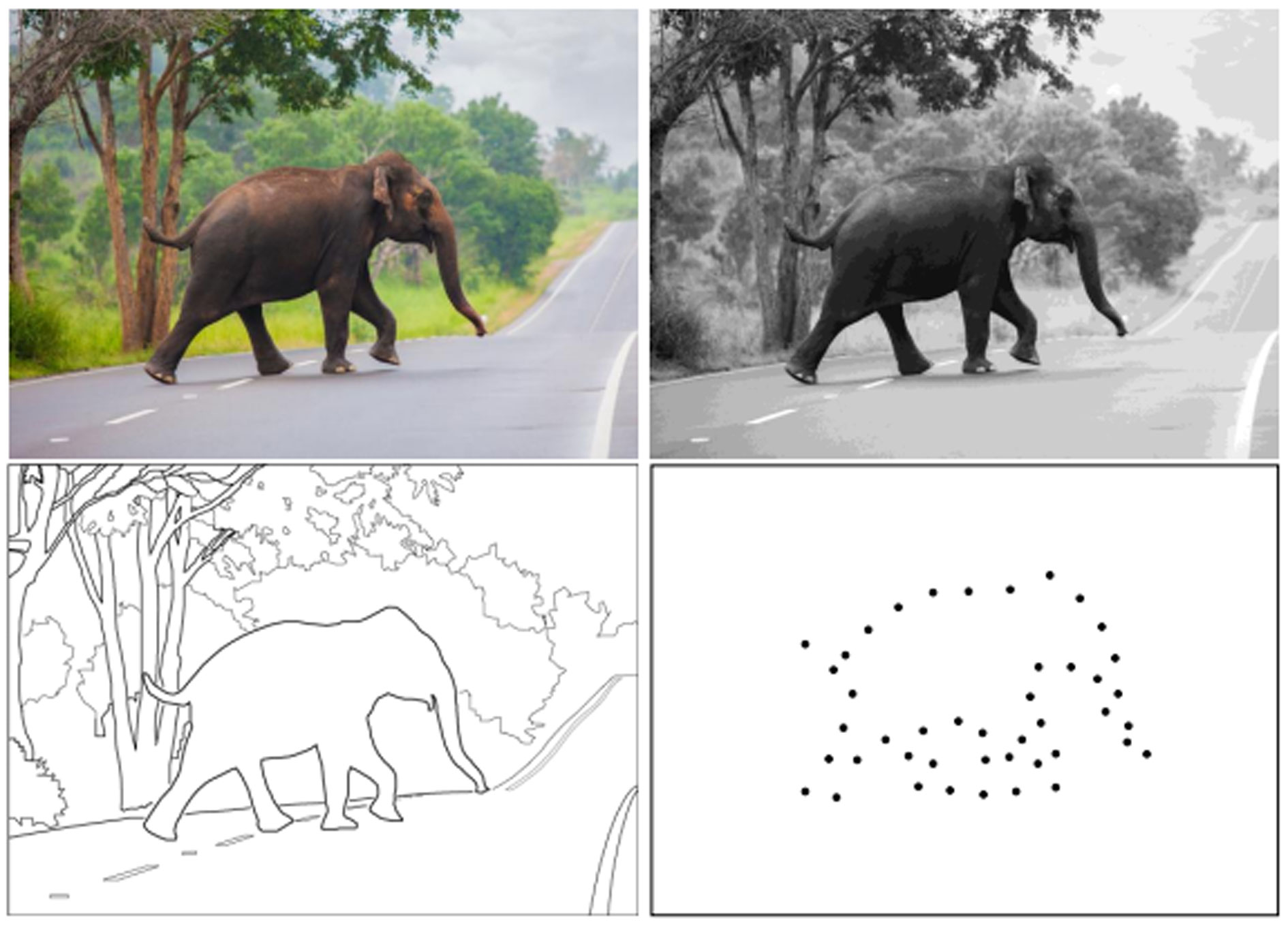
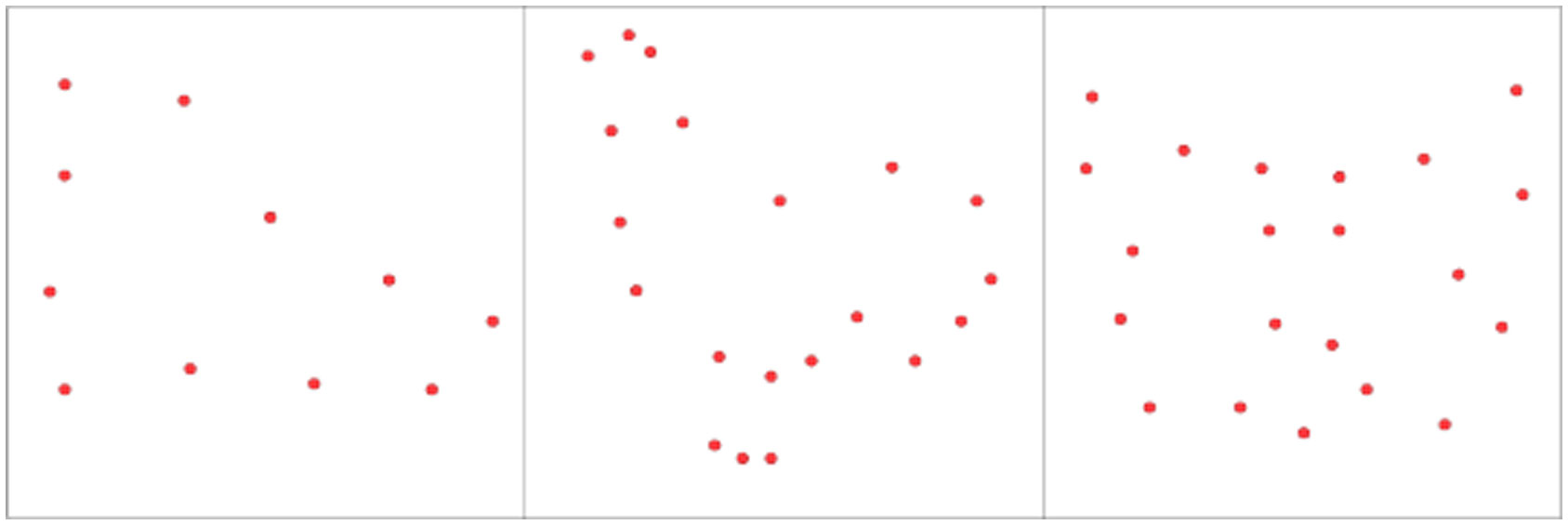
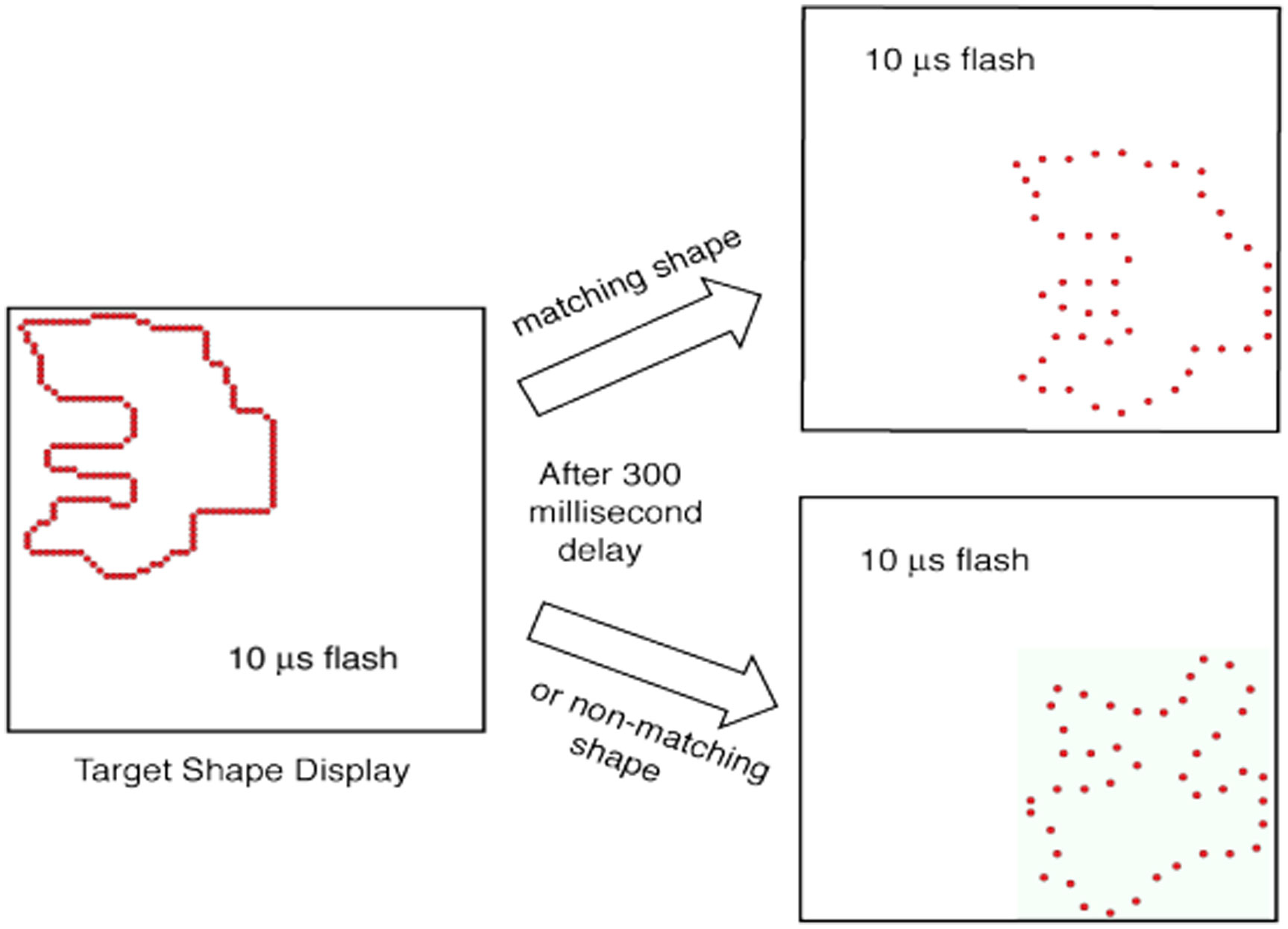
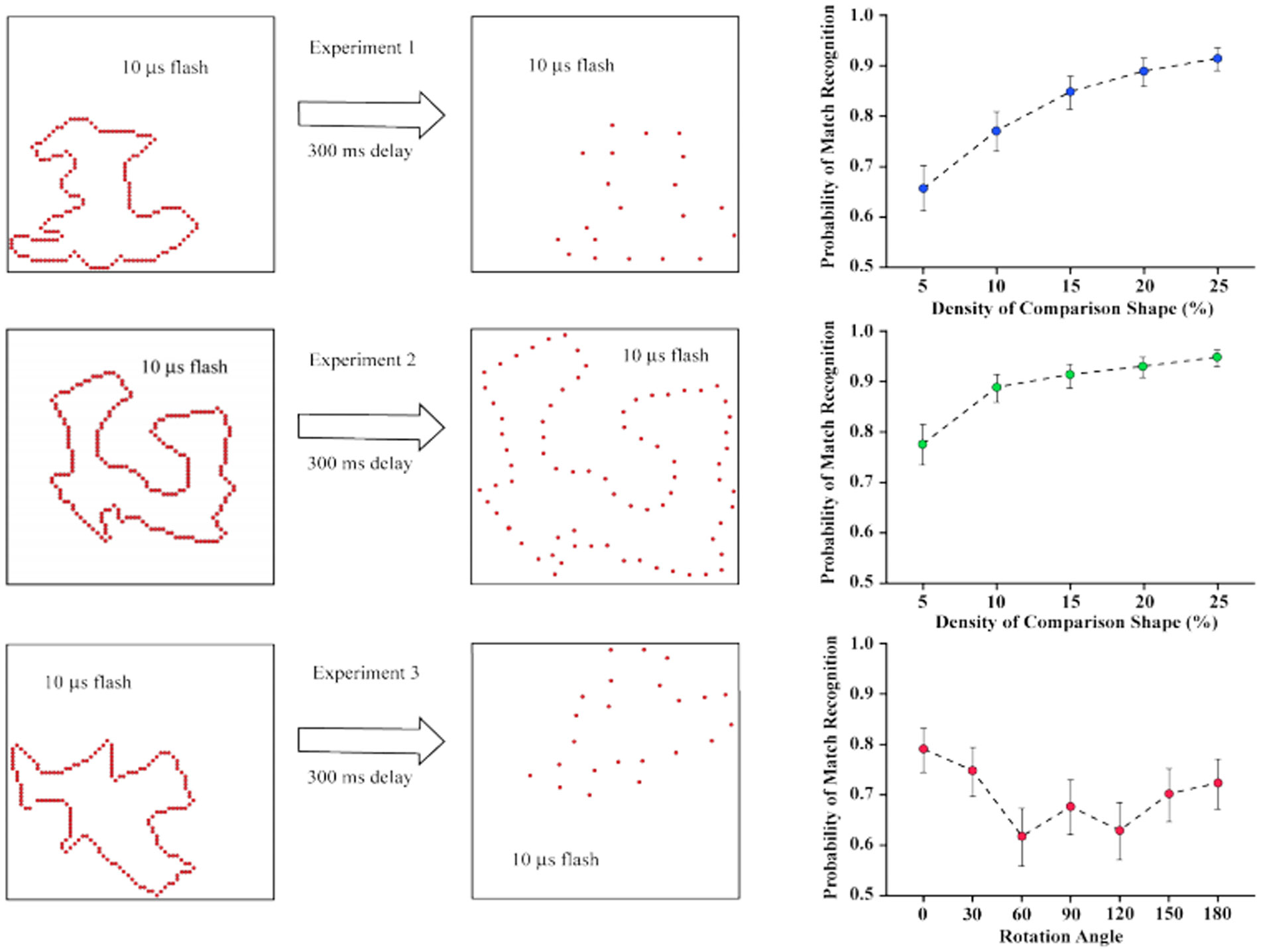
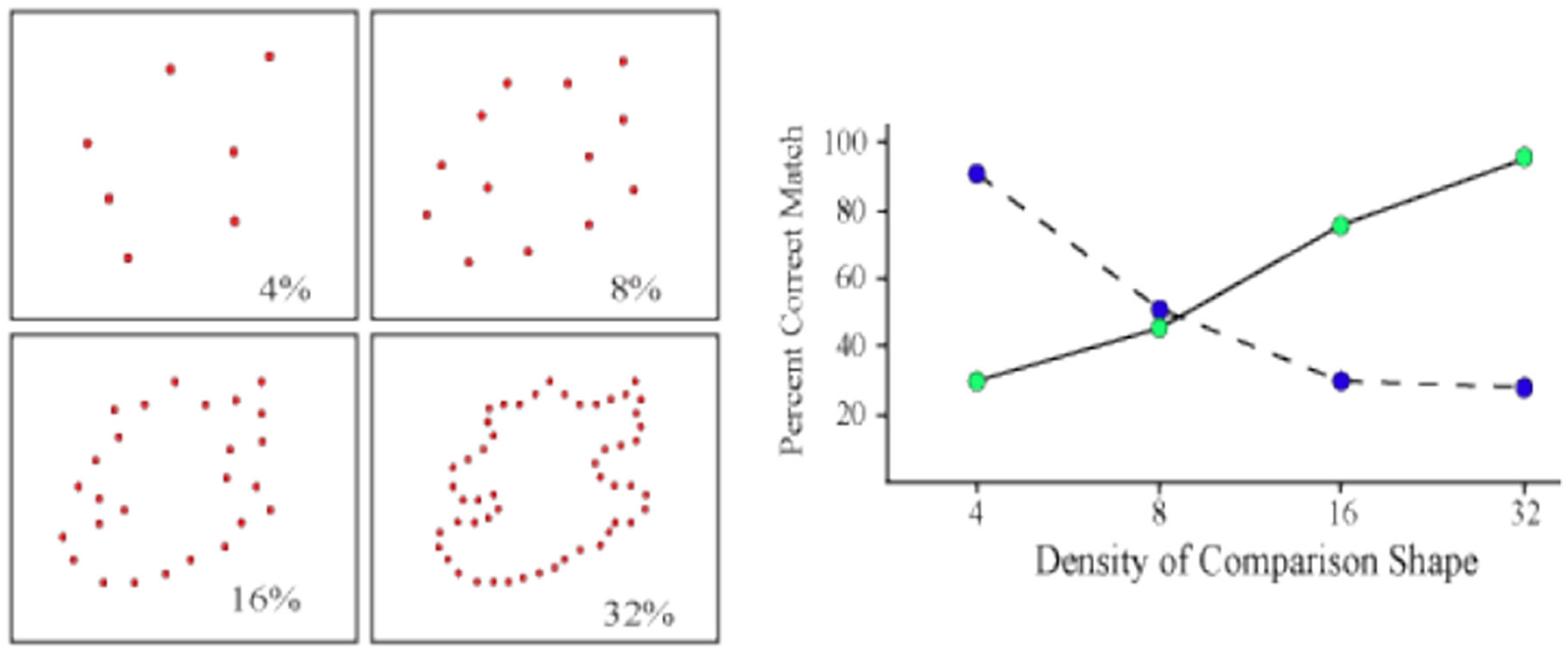

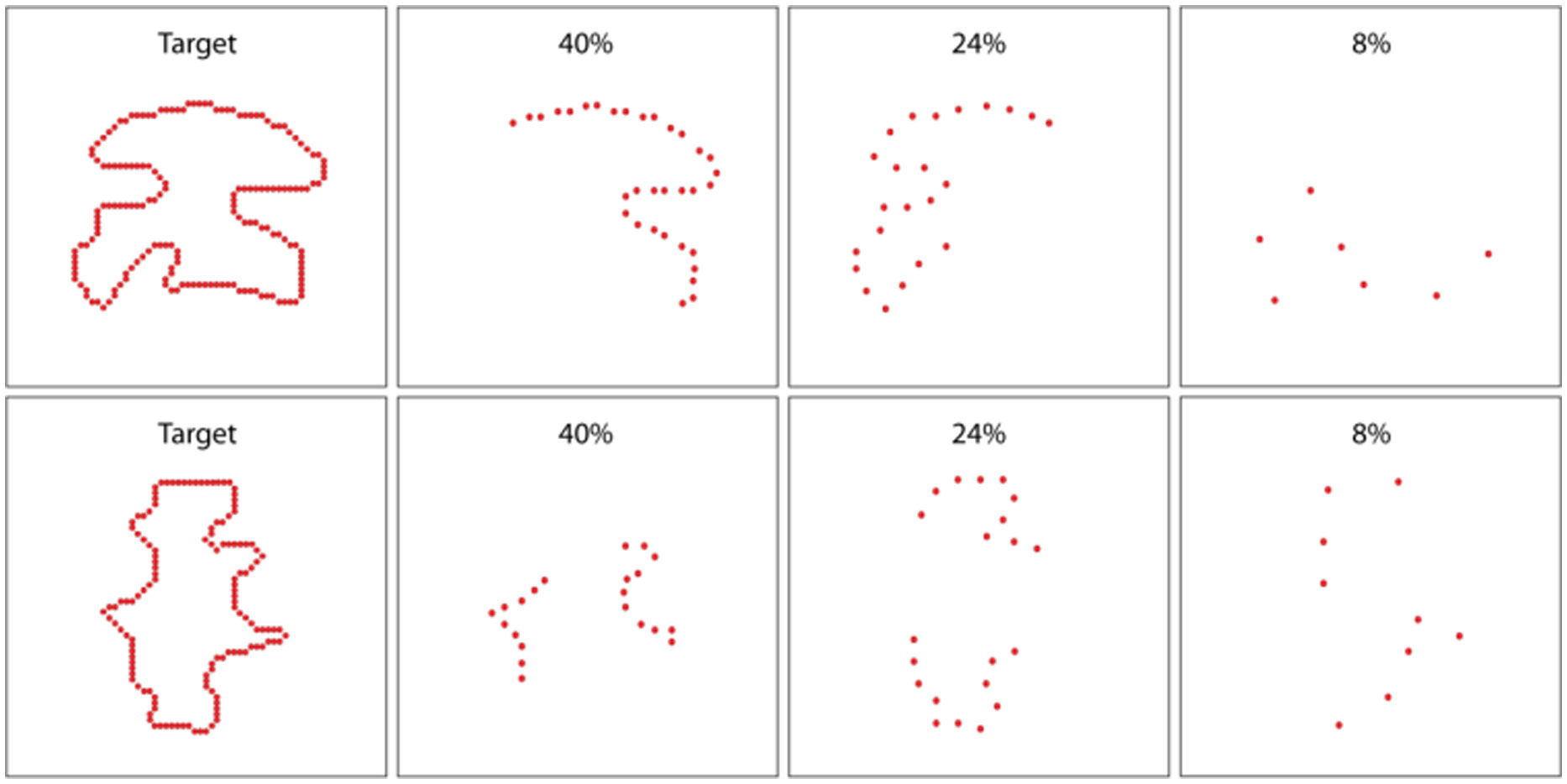
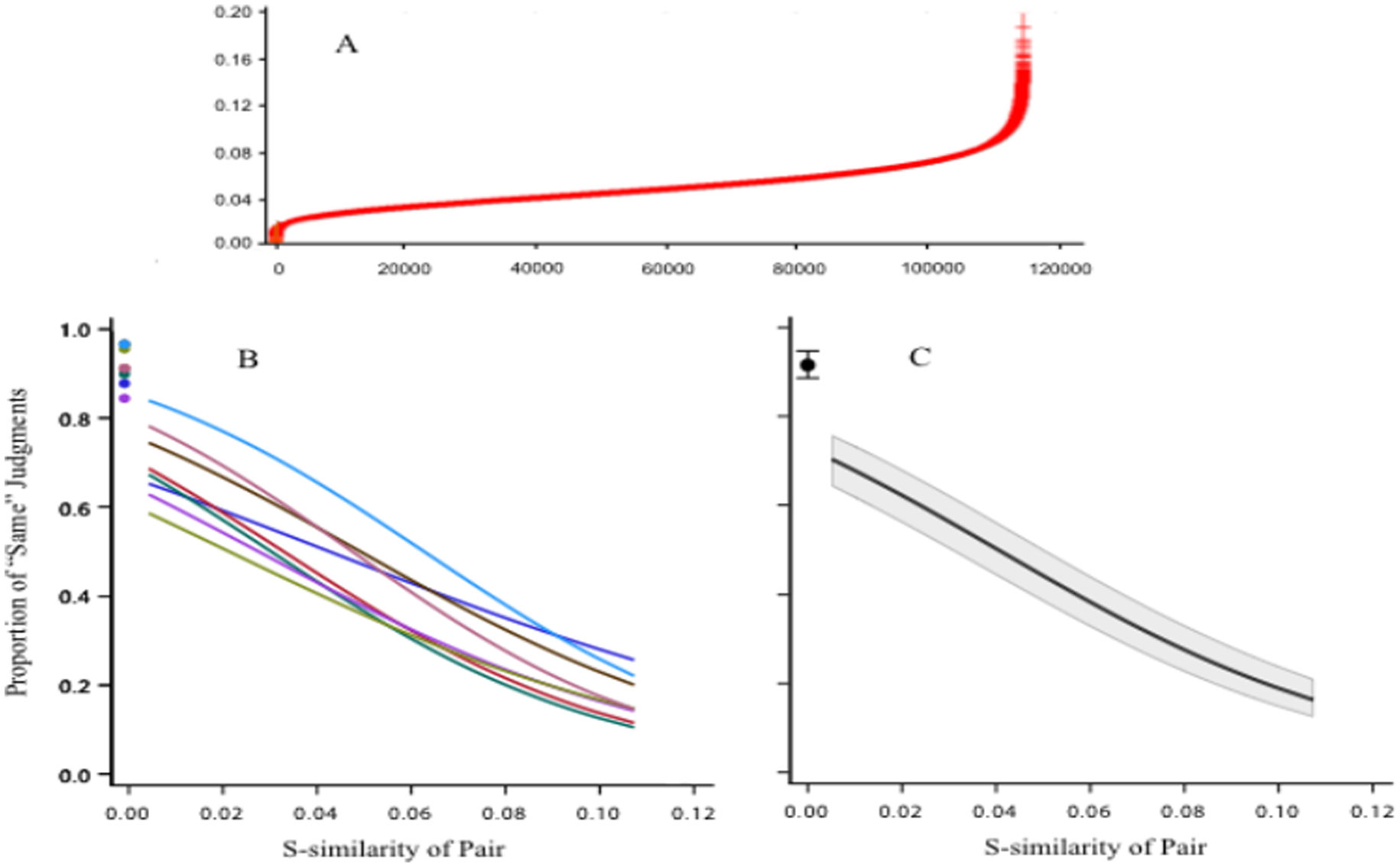



 DownLoad:
DownLoad: